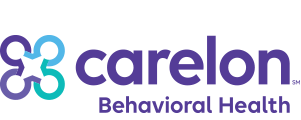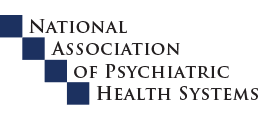Sierra Tucson offers effective, comprehensive treatment for individuals struggling with addiction and mental health concerns. Learn more about the signs and symptoms of opiate addiction.
Understanding Opiate Addiction
Learn about opiate addiction
The term “opiates” refers to a group of drugs that are derived from opium (which, in turn, comes from the poppy plant). Opiates, which are also commonly referred to as opioids and narcotics, are used both for legitimate medical purposes and as illicit recreational drugs.
Medically, opiates such as morphine, codeine, oxycodone, and fentanyl are valued for their analgesic (painkilling) properties. Recreationally, these opiates, along with others including heroin and opium, are abused for the euphoric high they can produce. In both medical and recreational situations, opiates are highly addictive substances and pose a risk of death by overdose when misused.
Statistics
Opiate addiction statistics
Opiate abuse is a large and growing problem in the United States and other parts of the world. While the abuse of some illicit substances has been trending downward in recent years, opiate abuse has increased drastically. For example, between 1992 and 2003, the number of Americans who abused prescription medications (most of which are opiate-related) rose from 7.8 million to 15.1 million. By 2006, that number had increased to 20.4 million.
Though prescription medications account for the majority of opiate abuse cases, heroin remains a troubling presence in the lives of many Americans. Experts estimate that as many as 900,000 Americans are currently struggling with an addiction to heroin.
Opiate abuse and addiction accounts for more than 18% of admissions to drug treatment programs in the United States, and is responsible for as many as 80% of drug-related deaths. Factoring in healthcare costs, traffic accidents, criminal justice system expenses, and crimes committed by individuals under the influence of opiates, economists estimate that opiate addiction costs U.S. taxpayers more than $400 million every year. At Sierra Tucson, we offer a comprehensive treatment program for those individuals who are suffering from opiate abuse.
Causes and Risk Factors
Causes and risk factors for opiate addiction
As with all types of substance abuse and addiction, opiate abuse can be influenced by a variety of genetic, environmental, and other risk factors.
Genetic: Family history of substance abuse and addiction has proved to dramatically increase the likelihood that an individual will engage in similar behaviors. Multiple studies of families, adopted children, and twins indicate that the closer genetic ties a person has to an addict, the greater the likelihood that they will also become addicted. Having an addicted parent is a significant risk factor for developing an addiction.
Environmental: Family also plays a role in environmental influences on opiate abuse and addiction. In addition to inheriting a genetic predisposition for addiction, children whose parents openly abuse drugs have a greater risk of drug abuse than do children who have neither exposure nor access to illicit recreational substances. Peer groups, geography, and socioeconomic status can also impact the odds that a person will use, abuse, and become addicted to opiates and other drugs.
Risk Factors:
- Injury or illness that is medically treated with opiates
- Chronic pain
- Substance abuse and addiction among close family members
- Mental health conditions such as depression, panic/anxiety disorder, and bipolar disorder
- Trauma
- History of being physically or emotionally abused
- Living in an area where drugs are plentiful and accessible
- Socioeconomic pressures
- Peer pressure
Signs and Symptoms
Signs and symptoms of opiate addiction
The signs and symptoms of opiate abuse can depend on a number of factors, including the type of opiate being abused, the length of time the person has been engaging in this behavior, and the severity of their opiate abuse. Individuals who exhibit many of the following symptoms may be abusing opiates:
Behavioral symptoms:
- Withdrawal from friends and family members
- Expressions of unprovoked anger
- Association with a new peer group
- Dramatic change in appearance (including clothing, weight, and personal hygiene)
- Lying about one’s whereabouts and engaging in other deceptive acts
- Unexplained absences from work
- Unexplained decline in performance at work
- Changes in financial status (suddenly having no money, asking to borrow or being suspected of stealing from friends, family members, or colleagues)
Physical symptoms:
- Impaired motor coordination
- Shallow breathing and slowed heart rate
- Dilated pupils
- Itchiness
- Excessive yawning
- Delayed reflexes or response times
- Apparent numbness to physical pain
- Nausea and diarrhea
- Unexplained rashes
Cognitive symptoms:
- Memory problems
- Lack of concentration or focus
- Excessive sleepiness
- Impaired problem-solving skills
- Poor spatial relations
- General confusion
- Obsession with acquiring and using drugs
- Inability to plan or follow through on plans
Psychosocial symptoms:
- Unpredictable mood swings, including a tendency to quickly become angry
- Panic and anxiety
- Episodes of depression
- Paranoia
Effects
Effects of opiate addiction
Opiate abuse can wreak significant damage on a person’s physical, emotional, and social well-being in both the short and long-terms. Common effects of opiate abuse and addiction include the following:
- Poor performance on the job
- Sexual dysfunction
- Vision problems
- Cardiovascular distress
- Increased risk of trips, falls, and other accidents
- Strained or ruined personal relationships
- Withdrawal to the point of isolation
- Shame, self-hatred, and suicidal ideation
Co-Occurring Disorders
Opiate addiction and co-occurring disorders
Like other addictions, the presence of such can often coincide with the presence of an additional mental health condition. Examples of various disorders that have been cited as co-occurring alongside substance use disorders, including opioid addiction, include:
- Panic and anxiety disorder
- Depression
- Abuse of and addiction to other drugs
- Bipolar disorder
- Oppositional defiant disorder (ODD)
- Attention deficit hyperactivity disorder (ADHD)
- Post-traumatic stress disorder (PTSD)
Withdrawal and Overdose
Effects of opiate addiction withdrawal and overdose
Effects of opiate withdrawal: Opiates are highly addictive substances, and users can develop dependence as quickly as with first use. When opiate-dependent individuals are incapable of getting more of the drug, withdrawal symptoms can set in within hours.
- Severe cramping
- Watery eyes
- Runny nose
- Shakiness and muscle spasms
- Diarrhea
- Nausea
- Intense drug cravings
- Lack of appetite
- Excessive perspiration
- Hot/cold flashes
- Insomnia
Effects of opiate overdose: Opiate overdoes in an unfortunately common (and potentially fatal) experience for people who are abusing the drug for recreational or non-supervised medical purposes. The following are common signs that a person has overdosed and is in need of immediate emergency medical care:
- Dramatically low pulse/heartbeat
- Extremely shallow breathing
- Inability to respond to external stimuli
- Seizure
- Constricted pupils
- Pale, clammy skin
- Bluish coloring on lips and fingernails













